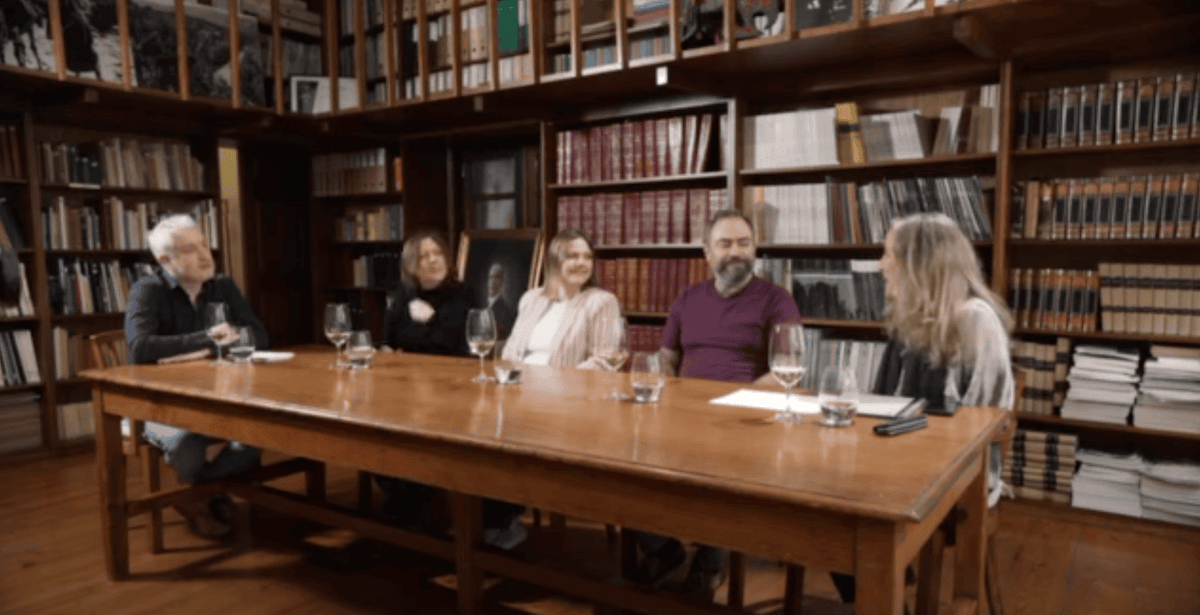What was clear after the primeurs tasting of the 2024 vintage of the Grand Cercle des Vins de Bordeaux was that the wines are, as a general rule, light, fleshy and quite simple but with soft tannins, plenty of freshness and appealing fruit. Above all, and this will really please those who harp back to the days of lower alcohol levels, most of the wines were under 14% with some even under 13%. They are for early drinking, and should be competitively priced.
The downside is low yields, which were largely the result of rampant downy mildew, which struck as early as April in some vineyards after persistent spring rain. According to Jean-François Quenin, owner of Château de Pressac and Château Tour de Pressac in Saint-Émilion, some growers lost half or up to 90% of their crop.
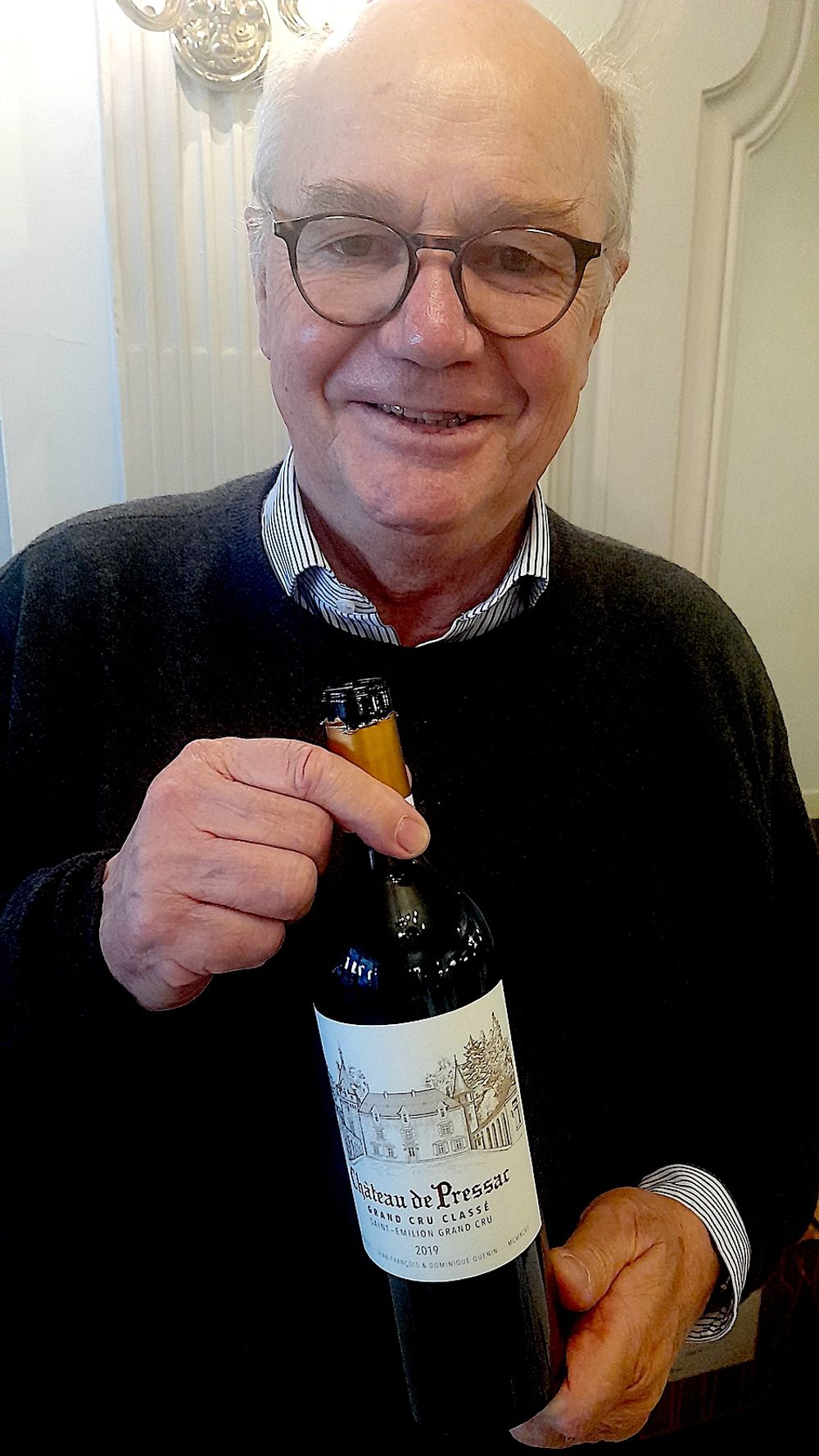
"You cannot get a Ferrari for the price of a Peugeot.” Jean-Francois Quenin
“We had three periods of different weather,” he told The Buyer. “Before June, we had a year’s rainfall in six months, so mildew was a problem. A lot of people had it. We had sun and dry conditions in the middle of July until the end of August, although there was hail damage in the north of Pomerol in August. Then, for the harvest, it started to rain. So we had to pick a little earlier than we’d have liked."
"It was quite a difficult vintage – we had to sort the grapes very carefully as we had some rotten ones. However, the result is better than expected – a little lighter than normal, but fresh, fruity and no vegetal green aromas, which we were anxious about. But we had none at all.”
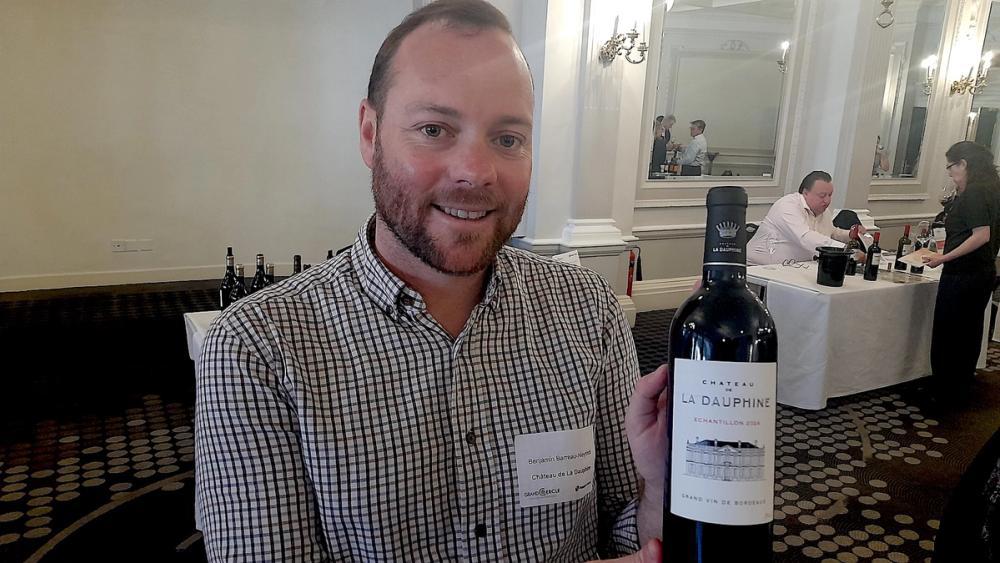
Benjamin Barreau of La Dauphine - 70% down in production
Quenin was one of many who had to chaptalise – in his case for the first time in 20 years – but his own yields were almost 40hl/ha, not far off a normal return. Conversely, Château La Cardonne’s was down to 26hl/ha, while Benjamin Barreau of Château de La Dauphine revealed their typical annual production of 100,000 bottles was down to 30,000. “It will make an easy wine to drink, being lighter and less concentrated,” he said.
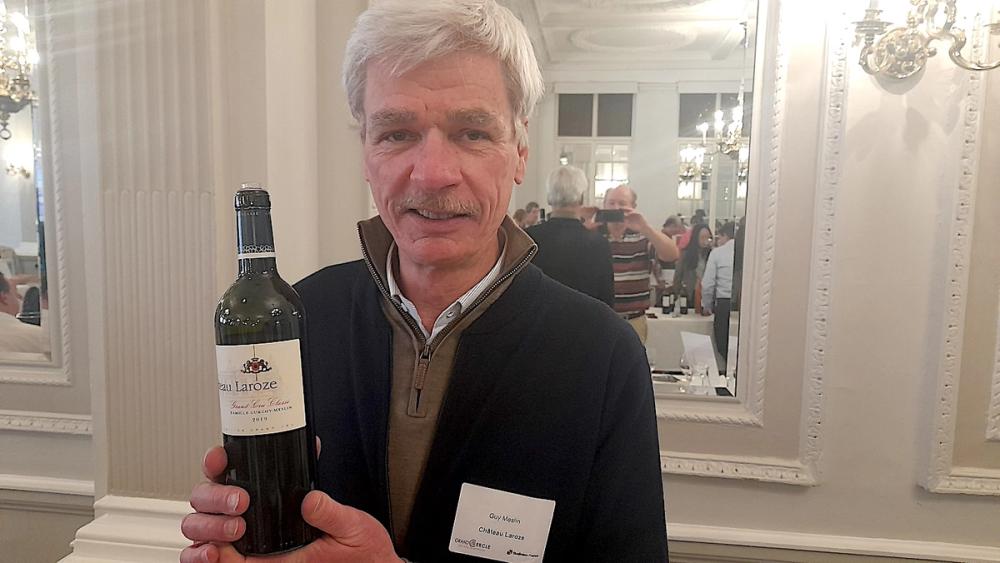
Guy Meslin of Laroze - The 2024s have elegant tannins and invigorating freshness
Talking to the growers and winemakers at the tasting revealed that they had all been very careful not to extract too much for fear of tannins that were not fully ripe, with some even being harsh. Punchdowns were consequently avoided in the main. All those I spoke to stressed they had employed the strictest selection of berries. Guy Meslin of Château Laroze declared “we have a very precise way to separate the berries - with a mechanical device which is better than optical sorting equipment.”
Meslin, who said they did not chaptalise at Laroze, professed they lost quite a bit of volume to downy mildew but more to ‘millanderage’ or ‘hens and chicks’, when bunches contain berries of different size and maturity. The 2024s nevertheless had elegant tannins and invigorating freshness. The 2019 vintage, he poured alomgside the 2024, showed very well, as might be expected of such a classic vintage.
Tariffs and prices
The potential effect of Trump’s tariffs was, unsurprisingly, a hot topic of conversation. Quenin revealed that the CIVB is expecting a decrease in sales of 20-30% to the USA on the back of the proposed tariffs. “For me, it’s actually better if the price goes up,” mused Quenin, who exports 10-15% of his production to the States. “I think that in the US my Tour de Pressac is not expensive enough as many Americans think the wine can’t be that good at $40. So if my wine goes up to $50, it may help me to sell more. But at the lower price points, I appreciate any increase could be a problem for our producers in America.”
As fas as prices are concerned for the UK market, Quenin does not feel they can go down much further. “Last year, prices went down a lot,” he continued, “so I am not sure they can go down again as people are losing money. In Bordeaux, we have taken out 20-30% of the vines in the last two years – mostly for entry level wines. We are selling those for less than half the cost of production, so people are suffering a lot. If people are obliged to reduce the price, then the quality will be reduced. Customers will get what they pay for. You cannot get a Ferrari for the price of a Peugeot.”
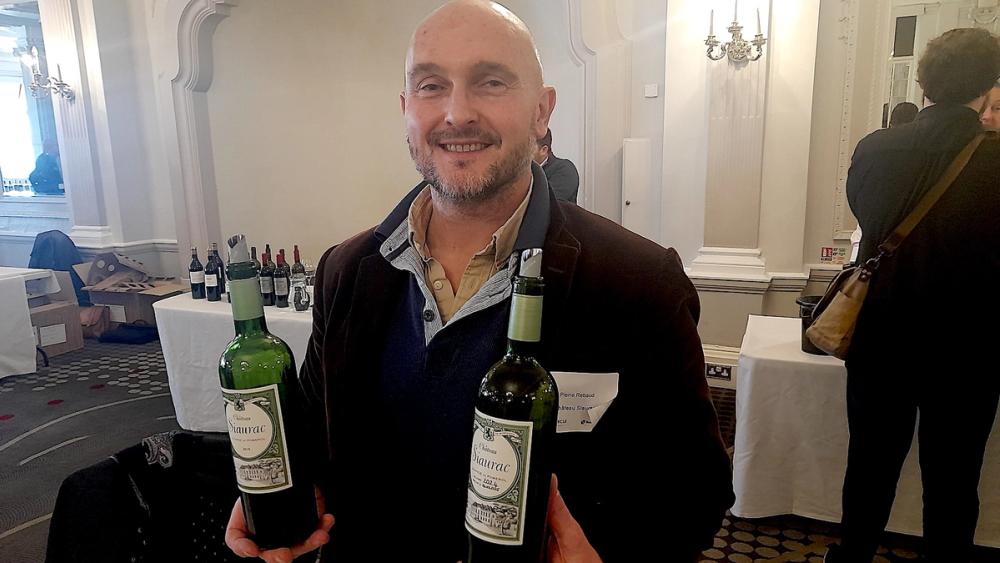
Pierre Rebaud of Siaurac - producers had to roll with the punches
Pierre Rebaud of Château Siaurac who, like Quenin, chaptalised in order to gain a degree of alcohol, was justifiably pleased with his 2024, which came in at 13.5% abv. “We lost a large part of the Merlot, which makes up only 53% of the blend when normally 80%. We traditionally use 30% new oak normally, but none in ’24. The structure is lighter but fresh. It’s for drinking within 5-6 years, not like the 2019 which is best drunk when 20 years old. I like the style, although it’s not the normal estate style. We got 33 hl/ha compared to 42-45 normally.”
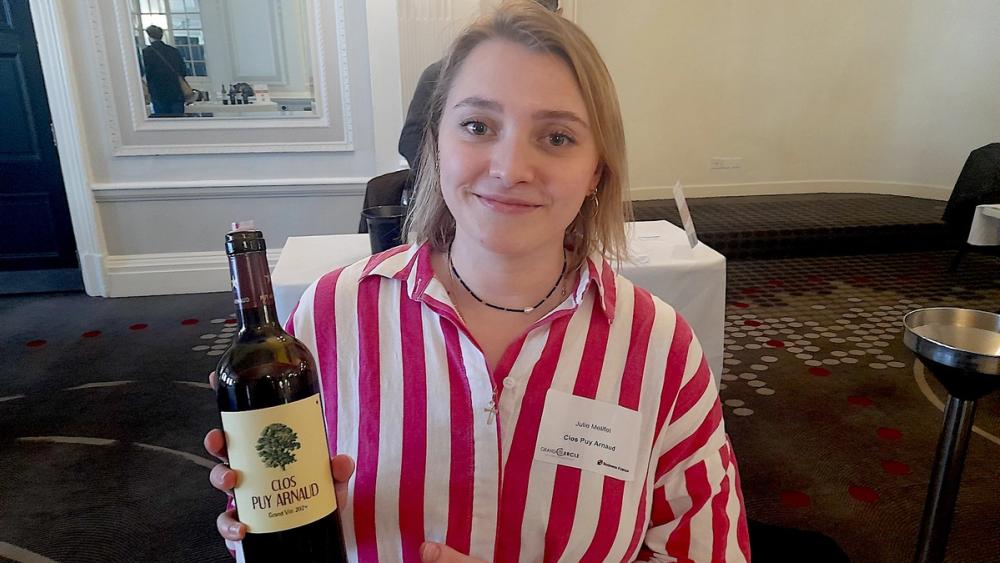
Julie Metifet of Clos Puy Arnaud - 2024s best drunk within three years
How long the 2024s will age was a moot point. Julie Metifet of Clos Puy Arnaud thinks hers are best drunk immediately - within 3 years - while Pierre Delage, director-general of Lanessan, effectively concurred, saying that his 2024 “will be easy to drink soon.” At 12.5% abv, it is quite light in colour with supple tannins, the winemaking team having been very careful not to over-extract. As for the 2019, Delage gushed that “I love it and it is almost ready to drink.”
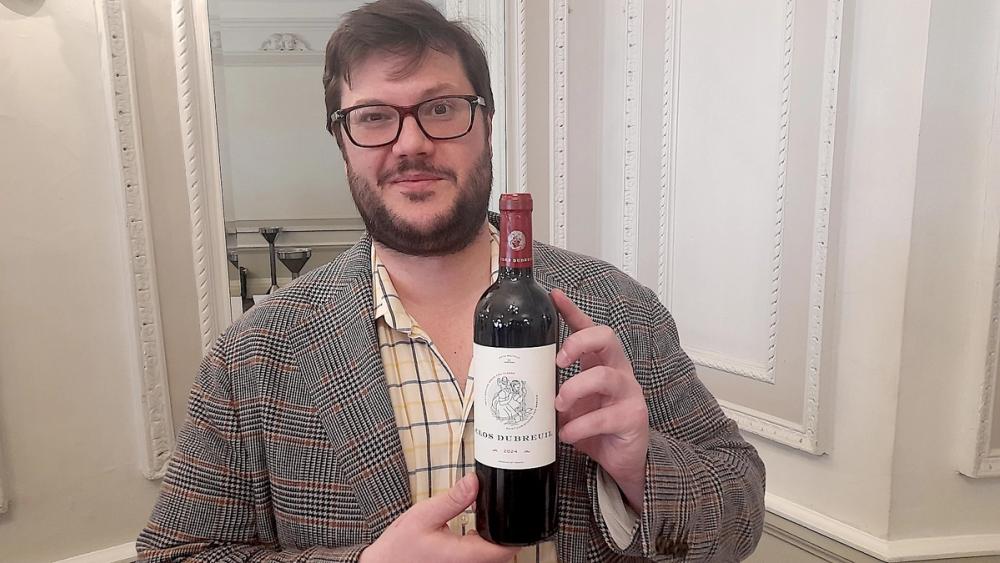
David Eads of Clos Dubreuil
David Eads, the American CEO of Saint-Émilion Grand Cru estate, Clos Dubreuil, declared he was “cautiously optimistic’ about his new winemaker Joel Elissalde’s first vintage (2024). “We harvested late in mid October, with the rain being quite scary in harvest,” he admitted, “but one of Joel’s sayings is that ‘We play to win, not not lose.’ The body and fruit was what we wanted to get out of the harvest.” The wine certainly showed more concentration than some other wines, which were a bit fleshy.
While praising his Chardonnay 2024 as “insanely good”, Eads felt his 2014 vintage was not dissimilar to the 2024. “Jeroboams have the 2014 in stock, and really liked it. It works better for a British palate, being classic in style,” he said, adding he considered Trump’s tariffs to be foolish. “But I don't think they will affect sales that much. American wines have such a high price tag, and I believe an extra 20% on French wines won’t scare people off.”
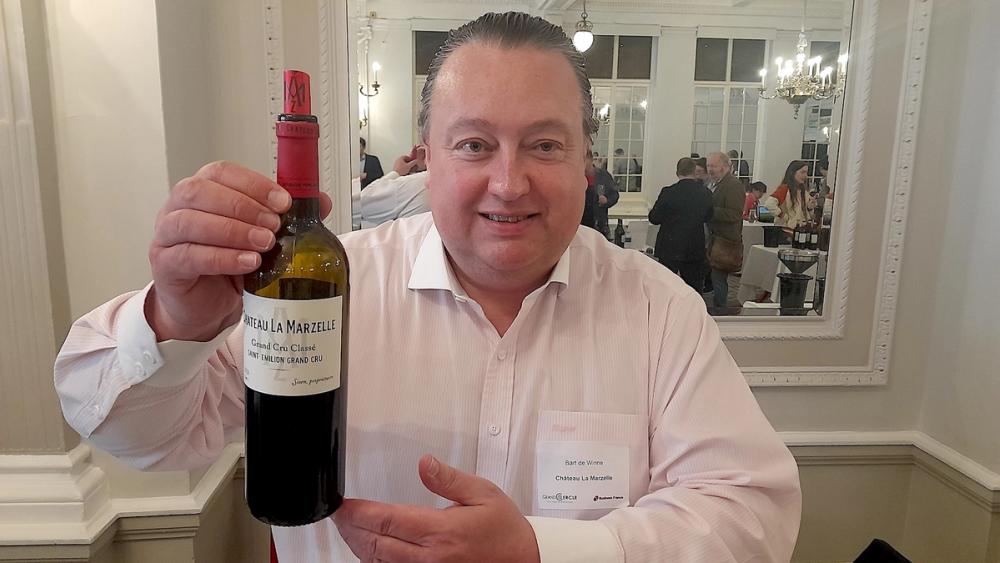
Bart de Winne of La Marzelle
Bart de Winne, the plain-speaking Belgian export manager of organic producer, Château La Marzelle, was another who spoke favourably of the 2024s. “We’re pretty comfortable with the results in what was a complicated vintage,” he said. “We benefited from farming biodynamically - we gain our certification in two years. Maturation is in 80% new French oak for our first wine, with 20% in terracotta amphorae. All the Cab Franc goes into amphorae as it helps us develop its aromatic capacity. We used more Merlot (80%) and less Cab Franc (15%) than we normally do. We’re looking for elegance and silkiness. We only sell small quantities to the US, and got a palate in there before Trump was elected.”
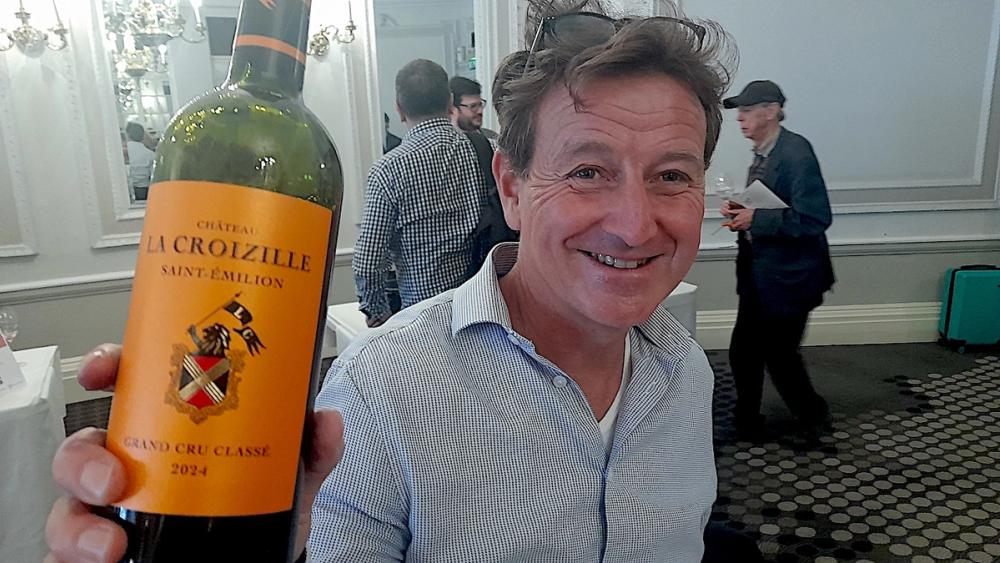
Anthony Crameri
Anthony Crameri, export manager of the De Amour group which owns five Bordeaux châteaux, including Grand Cru Classé Saint-Emilion estates, Tour Baladoz and La Croizille, was brutally frank. “2024 is a small bad vintage,” he sighed. “The Merlots were very, very complicated. I’m quite happy with the Cabernets but very disappointed with the Merlot. There is a lack of structure in middle palate, which is quite weak; a good nose but a short finish. We had to do a lot of treatments in the vineyards against downy mildew. We didn’t have to chaptalise but the alcohol level is low.”
































